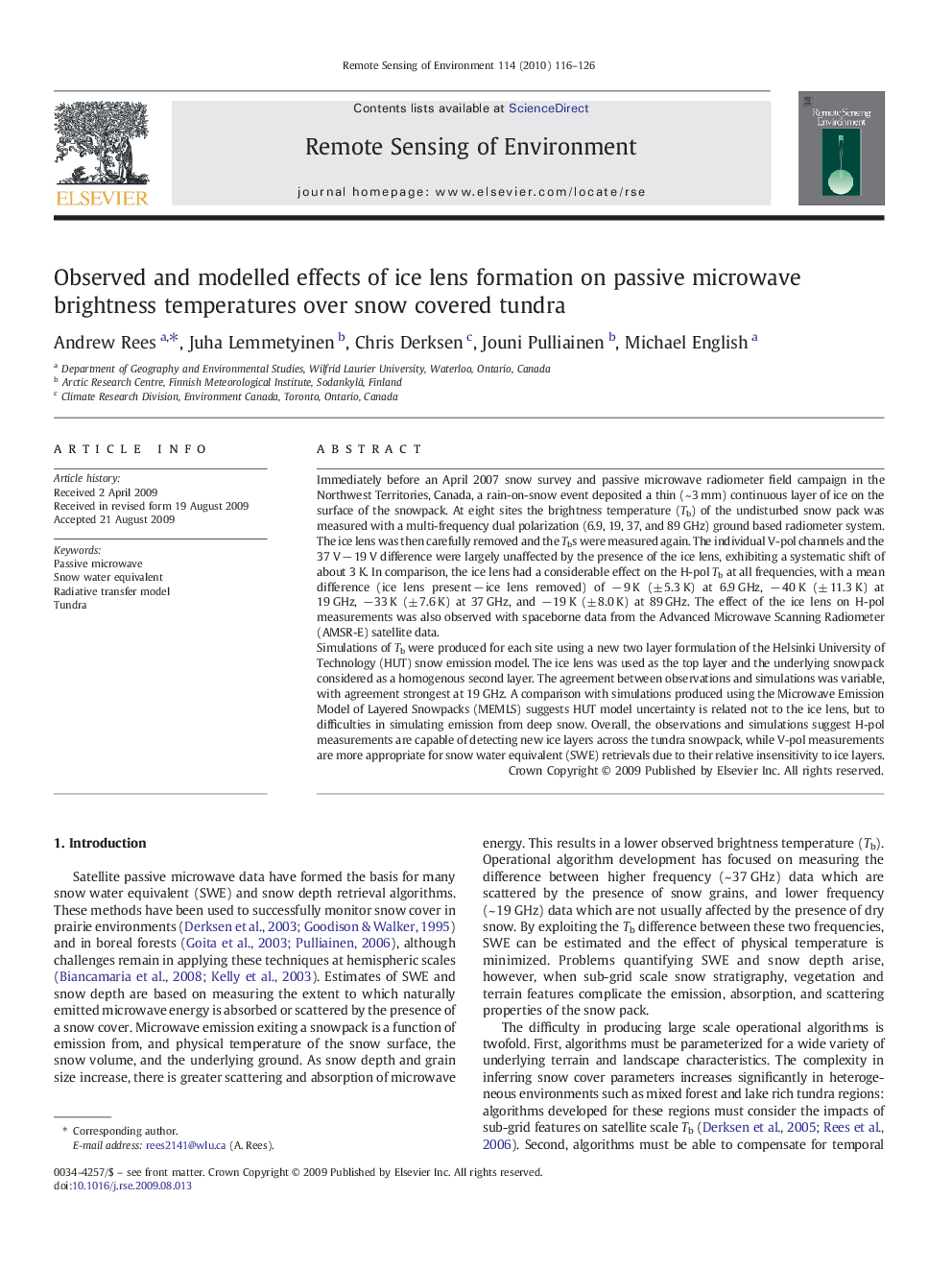| کد مقاله | کد نشریه | سال انتشار | مقاله انگلیسی | نسخه تمام متن |
|---|---|---|---|---|
| 4459932 | 1621308 | 2010 | 11 صفحه PDF | دانلود رایگان |

Immediately before an April 2007 snow survey and passive microwave radiometer field campaign in the Northwest Territories, Canada, a rain-on-snow event deposited a thin (~ 3 mm) continuous layer of ice on the surface of the snowpack. At eight sites the brightness temperature (Tb) of the undisturbed snow pack was measured with a multi-frequency dual polarization (6.9, 19, 37, and 89 GHz) ground based radiometer system. The ice lens was then carefully removed and the Tbs were measured again. The individual V-pol channels and the 37 V − 19 V difference were largely unaffected by the presence of the ice lens, exhibiting a systematic shift of about 3 K. In comparison, the ice lens had a considerable effect on the H-pol Tb at all frequencies, with a mean difference (ice lens present − ice lens removed) of − 9 K (± 5.3 K) at 6.9 GHz, − 40 K (± 11.3 K) at 19 GHz, − 33 K (± 7.6 K) at 37 GHz, and − 19 K (± 8.0 K) at 89 GHz. The effect of the ice lens on H-pol measurements was also observed with spaceborne data from the Advanced Microwave Scanning Radiometer (AMSR-E) satellite data.Simulations of Tb were produced for each site using a new two layer formulation of the Helsinki University of Technology (HUT) snow emission model. The ice lens was used as the top layer and the underlying snowpack considered as a homogenous second layer. The agreement between observations and simulations was variable, with agreement strongest at 19 GHz. A comparison with simulations produced using the Microwave Emission Model of Layered Snowpacks (MEMLS) suggests HUT model uncertainty is related not to the ice lens, but to difficulties in simulating emission from deep snow. Overall, the observations and simulations suggest H-pol measurements are capable of detecting new ice layers across the tundra snowpack, while V-pol measurements are more appropriate for snow water equivalent (SWE) retrievals due to their relative insensitivity to ice layers.
Journal: Remote Sensing of Environment - Volume 114, Issue 1, 15 January 2010, Pages 116–126